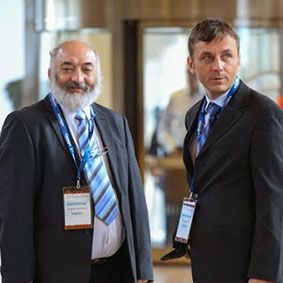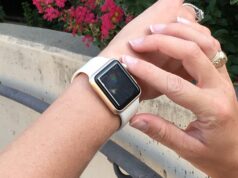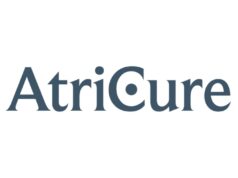
Néstor López Cabanillas and Elencwajg Benjamin from Buenos Aires, Argentina, write about two similar novel techniques for cardiac resynchronisation therapy (CRT) implantation, currently used in some countries in Latin America and Europe, which are showing favourable results in heart failure patients.
Cardiac resynchronisation therapy (CRT) is a well-established therapy for patients with symptomatic heart failure, left bundle branch block and severe depression of ejection fraction, which helps to improve the functional class and reduce morbidity and mortality in this group of patients. The usual way of placing the left ventricular (LV) lead is through a tributary vein of the coronary sinus. However, this approach fails in approximately 10% of the cases. In addition, about 30% of patients do not benefit from CRT. In those cases, a surgical epicardial approach via lateral thoracotomy is required, increasing morbidity and risks in patients with advanced heart failure. In recent years, endocardial LV stimulation is being utilised as an alternative to epicardial approach and an increasing number of data are providing evidence of better cardiac performance with endocardial LV stimulation compared to conventional epicardial LV stimulation.
Most endovascular LV endocardial lead placement techniques use an atrial transseptal approach. However, the earlier implantation techniques were quite difficult to perform. At the last Cardiostim/EHRA Europace meeting in Nice (18–21 June 2014), two new techniques were presented, both using a transseptal puncture. The ALSYNC (Alternate site cardiac resynchronization) study, presented by John Morgan (University of Southampton, Southampton, UK) and Mauro Biffi (Institute of Cardiology, University of Bologna, Bologna, Italy) utilises a superior approach; and the Jurdham procedure, that I [Néstor López Cabanillas] presented, is performed with an inferior approach. At Cardiostim, Dr Morgan, Dr Biffi and myself addressed many common aspects of LV endocardial CRT approach, among those the advantages of avoiding the difficulties and problems of the coronary venous anatomy and the clinical benefits of this approach, as well as the real incidence of the potential complications.
In both approaches, positioning the pacing lead in the left ventricle allows an ample access to the cavity of left ventricle from which to choose the most appropriate pacing site. Besides this, there is evidence that endocardial pacing produces a better physiological response to CRT than with coronary sinus epicardial venous leads.
ALSYNC
ALSYNC included 138 patients and was conducted at 16 centres in Europe and two in Canada. The procedure was performed with standard tools, except for an investigational transseptal lead delivery system (Medtronic) designed specifically for the procedure. All patients had indications for CRT but could not have transvenous leads adequately positioned or were non-responders within six months of implant. Patient population included 40% with ischaemic cardiomyopathy, 50% with atrial fibrillation, 78% with a previous failed attempt to engage a CRT system, and 22% with prior successful CRT device implantation but with no clinical improvement within six months. Almost 75% of the cases were in New York Heart Association (NYHA) functional class III or IV. Successful CRT implant was achieved in almost 90% of the cases.
At the initial six-month follow-up, 60% of patients showed improvement in NYHA class and 55% showed an improvement in LV end systolic volume of at least 15%.
One of the main concerns about these techniques is related to potential systemic thrombosis and chronic anticoagulation. In the first six months of follow-up, complications included some implantation site haematoma, one case of intraventricular thrombosis, two strokes and four transient ischaemic attacks.
The LV pacing lead, which is inserted through the interatrial septum and across the mitral valve, could potentially cause interference with the valve function. However, it did not happen immediately after implantation or at six months follow-up. On the contrary, mitral valve function improved in many of the patients at six months, probably as a response to resynchronisation. That beneficial effect may be further increased with enhanced ventricular remodeling. In that respect, about two-thirds of the group showed some kind of functional or reverse-remodeling response over at least six months of follow-up. The rest of the complications included infections and an aortic puncture at transfemoral implantation.
Ten patients died during the six-month follow-up, only one due to a pneumothorax that was related to the device implantation but not to the LV lead insertion.
The investigators considered that the technique provides a safe procedure in the right hands, without exposing the patients to any significantly greater risk.
Jurdham procedure
The Jurdham procedure, first published in HeartRhythm in November 2012, has been conducted in two centres in Argentina and one in Colombia.
While in the ALSYNC study the transseptal puncture is made through the upper veins, in the Jurdham procedure, a standard femoral approach is performed. The LV lead is advanced through the transseptal sheath up to the LV; then, the proximal end of the lead is attached to a “pulling thread” and pulled into the subclavian vein. Twenty seven patients with standard indications for CRT were included and followed up for 12.5±10 months. There were 19 males and eight females, 60% idiopathic, 25% ischaemic and 15% chagasic cardiomyopathies. Initial indications for this procedure were failure of coronary sinus implant or non-response to resynchronisation. In a second step it was extended as a first option in patients previously anticoagulated. Due to the good reported results of endocardial CRT from many centres, it was further extended to patients that preferred this approach instead of 30% risk of failure of coronary sinus implant.
The implant was successful in all the patients. Initial functional class was II in 11%, III in 81% and IV in 8% of the patients. The class improved in 95% of the patients; 55% improved two functional classes and 45% improved one functional class. The only patient that did not improve was one with initial functional class II. There were not impairments of mitral regurgitation or left ventricular lead infective endocarditis. In three patients there was a moderate pocket haematoma. Under adequate oral anticoagulation there were no stroke episodes. Two patients presented short duration transient ischaemic attacks with fast spontaneous restitutio ad integrum.
There were seven deaths, due to progression of the basal cardiac condition, pneumopathy and one sepsis in a patient that underwent his third surgical procedure because of two previous coronary sinus failed procedures.
With these results, we conclude that the Jurdham procedure is simple and safe, with very good clinical results and few complications. If further experiences confirm these data, the scope of indications may become even wider.
Néstor López Cabanillas and Elencwajg Benjamin are with the Department of Electrophysiology, Presidente Perón Hospital, Buenos Aires, Argentina.









